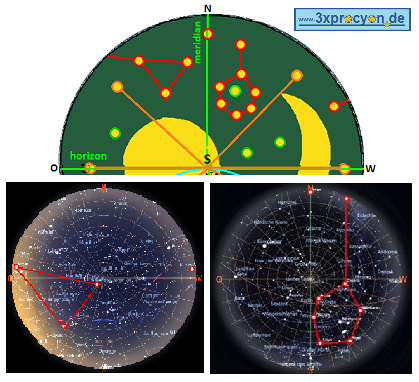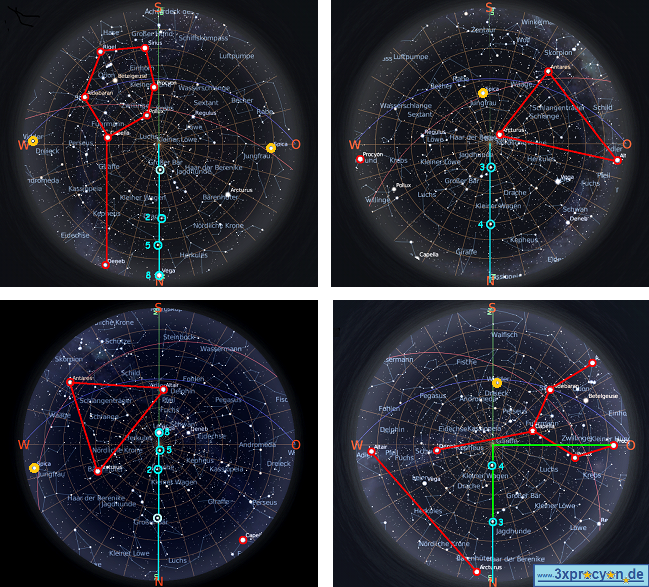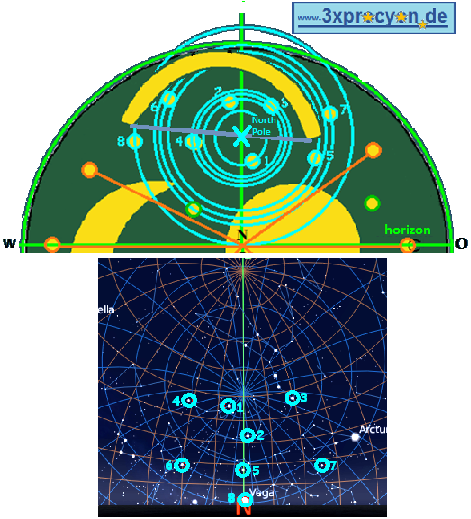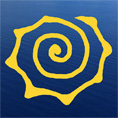 On the Nebra Sky Disc facing south, two large constellations form a triangle and a star at the edge on the right, as well as from a hexagon and two stars on the upper edge are depicted.
On the Nebra Sky Disc facing south, two large constellations form a triangle and a star at the edge on the right, as well as from a hexagon and two stars on the upper edge are depicted.
Looking north, eight circumpolar stars circle an invisible North Pole whose position on the Sky Disc is determined by three independent clues. The distances between the parallel circles of these stars proportionately fit the altitude angles of some of the brightest circumpolar stars.
The meridian is an imaginary great circle which runs through the North Pole and the South Pole; 90° to the horizon.
In the star clock three of the circumpolar stars discovered in the meridian are located almost vertically above one another, while at the same time the constellation from the Winter Hexagon with Deneb, and Vega at the northerly point, could be seen. Exactly six hours later two more circumpolar stars form an astral hand, when Altair had risen at the eastern point and thereby the triangular constellation occupied the eastern quarter of the sky, while Procyon from the Hexagon was located near the western point, shortly before setting. Another six hours later the first astral hand reached his upper culminacion in the meridian and another six hours later the stars of the second hand had changed their places. 
One of two astral hands had reached his lower culmination on the meridian.
Six hours later respectively one star of another hand was standing on each side of the North Pole.
After another 90 dedrees sky turn the first reached his upper pinnacle.
And again after a quarter turn of the visible starry sky the second had turned, as well, while Procyon was just rised and had reached the east point. This astral hand form an exactly 90° angle with Procyon in the east.
As the two stars Procyon and Altair moved parallel to the equinoctial line, one could see them performing a quarter astral course when they were positioned above the southern point.


